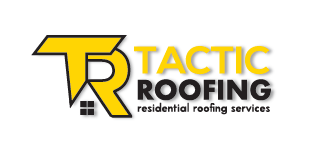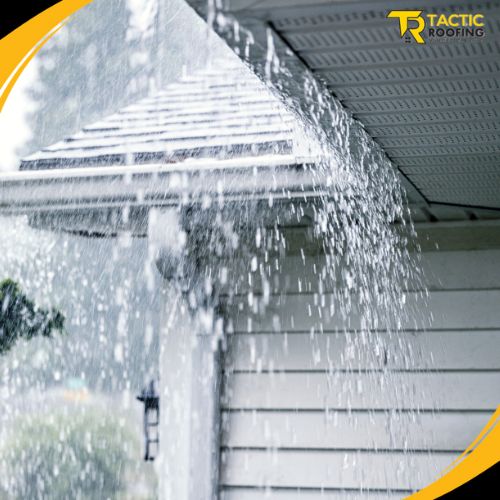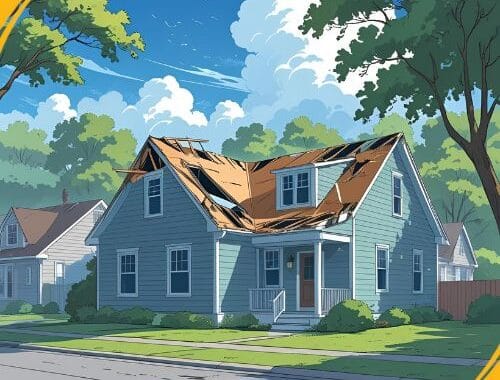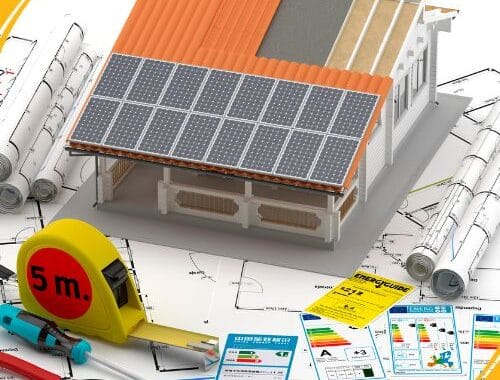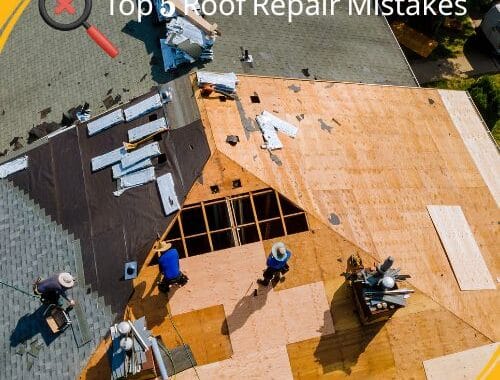The roof is your home’s first line of defense against the elements, standing strong against everything from intense sunlight to heavy snowfall. However, no roof is completely immune to the effects of weather, and over time, the elements can wear down even the most durable materials. Understanding how different weather conditions affect your roof can help you take preventive measures and extend its lifespan.
In this comprehensive guide, we’ll explore the various ways that weather impacts your roof, what signs to look for, and how to protect your home from the long-term effects of climate exposure.
1. Sun Exposure and UV Damage
While it may not seem like a major threat, continuous exposure to the sun can gradually weaken your roof over time. UV rays break down roofing materials, causing them to become brittle, crack, or fade in color. In warmer climates, the combination of heat and sunlight can accelerate this process.
Impact on Roof: Asphalt shingles are particularly vulnerable to UV damage. Prolonged sun exposure can cause them to dry out, curl at the edges, and eventually crack. This weakens the roof’s ability to protect your home from rain and other elements.
What to do: Regular roof inspections are essential, especially in areas with intense sunlight. If your shingles appear faded, brittle, or cracked, it may be time for repairs or replacement. Consider installing UV-resistant roofing materials, such as metal or reflective coatings, to mitigate sun damage.
2. Heavy Rain and Water Damage
Rain is one of the most common causes of roof damage. While your roof is designed to shed water, constant exposure to rain over the years can cause leaks, rot, and mold growth. Poorly maintained roofs or clogged gutters exacerbate the problem by allowing water to pool, leading to roof deterioration and interior water damage.
Impact on Roof: Heavy rain can seep into small cracks or weaknesses in the roof, causing leaks in the attic or ceilings. Water can also penetrate the roof’s protective layers, leading to wood rot and mold growth. Over time, this compromises the roof’s structural integrity.
What to do: Ensure your roof is well-maintained by clearing gutters, fixing leaks, and replacing damaged shingles or flashing. Regularly inspect your roof for signs of water damage, including damp spots in the attic, water stains on ceilings, and mold growth.
3. Snow and Ice Accumulation
Winter weather brings its own set of challenges for your roof. Snow and ice accumulation can put a lot of stress on the structure, especially for older or weakened roofs. When snow melts and refreezes, it can form ice dams, which prevent water from draining off the roof. This trapped water can seep under shingles, leading to leaks and water damage.
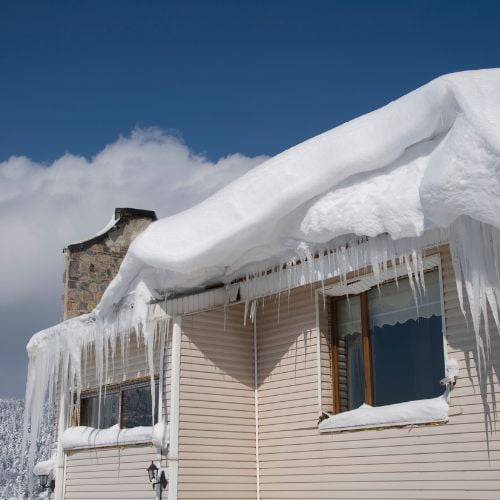
Impact on Roof: The weight of snow and ice can cause sagging in the roof structure, especially if the roof is not designed to handle heavy loads. Ice dams are a particular risk, as they can lift shingles and create gaps where water can enter. Over time, this leads to leaks, water damage, and even roof collapse in extreme cases.
What to do: After heavy snowfall, use a roof rake to safely remove snow from the roof. Ensure your attic is properly insulated and ventilated to prevent ice dams from forming. If you experience ice dam issues regularly, installing heat cables along the roof’s edge may help melt the ice before it accumulates.
4. Wind Damage
High winds can be incredibly destructive to roofs, especially in areas prone to hurricanes or severe storms. Winds can lift shingles, break off tiles, and even remove entire sections of the roof. Additionally, flying debris during storms can puncture or damage roofing materials.
Impact on Roof: Winds weaken the roof’s structural integrity by loosening shingles or tearing them off altogether. This exposes the underlayment, leaving the roof vulnerable to water damage. In extreme cases, winds can cause partial or total roof collapse.
What to do: Inspect your roof after severe windstorms for loose, missing, or damaged shingles. If you live in a wind-prone area, consider installing wind-resistant shingles or materials like metal roofing. Trim nearby trees to prevent branches from breaking off and damaging your roof during storms.
5. Hail Storms
Hail can cause significant damage to roofing materials, especially shingles. The impact of hailstones can create dents, cracks, and even holes in the roof. While a single hailstorm may not result in immediate leaks, repeated exposure can weaken the roof over time.
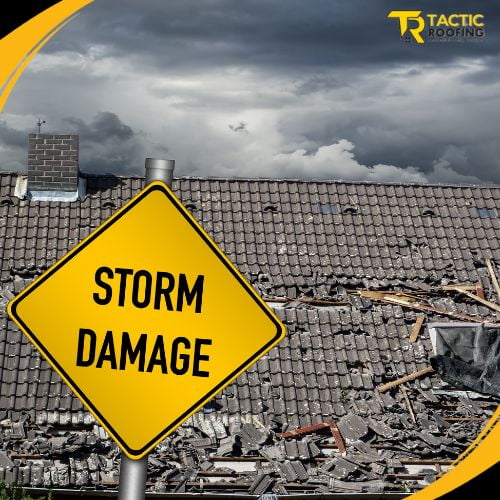
Impact on Roof: Hailstones can bruise shingles, causing them to lose granules, which compromises their ability to protect against water and UV rays. Severe hail can puncture shingles, allowing water to seep in and causing leaks.
What to do: After a hailstorm, inspect your roof for visible damage, such as dents or cracks. Even minor hail damage can weaken your roof, so it’s important to address it before it becomes a bigger problem. If your roof sustains significant hail damage, contact a roofing professional for an assessment.
6. Extreme Heat
In areas with hot climates, extreme heat can have a similar effect on your roof as constant sun exposure. Over time, the high temperatures cause roofing materials to expand and contract, leading to cracks and other forms of damage. Asphalt shingles are particularly susceptible to heat damage.
Impact on Roof: Prolonged heat exposure can cause shingles to blister, crack, or curl. The constant expansion and contraction of materials can also weaken the roof’s overall structure, making it more prone to leaks and water damage when it rains.
What to do: If you live in a hot climate, consider using heat-resistant roofing materials like metal, clay tiles, or slate, which can withstand high temperatures better than asphalt. Additionally, ensure your attic has proper ventilation to allow heat to escape, reducing the strain on your roof.
7. Freeze-Thaw Cycles
In regions where the temperature fluctuates between freezing and thawing, the freeze-thaw cycle can wreak havoc on your roof. Water from rain or melting snow can seep into small cracks in your roof, and when the temperature drops, the water freezes and expands, enlarging the cracks. This cycle repeats throughout the winter, causing progressive damage.
Impact on Roof: Freeze-thaw cycles can lead to cracked shingles, damaged flashing, and leaks. Over time, this constant cycle weakens the roof, increasing the likelihood of water damage and reducing the roof’s lifespan.
What to do: Inspect your roof for small cracks before winter sets in and repair them to prevent water from seeping in. Make sure your gutters are clean and functioning properly to ensure proper drainage, reducing the chances of water collecting on the roof.
8. Humidity and Moisture
In humid climates, excess moisture in the air can lead to issues like mold, mildew, and rot on your roof. When moisture gets trapped in roofing materials, it can cause them to weaken and deteriorate over time. Wood roofs and shingles are particularly vulnerable to moisture damage.
Impact on Roof: Moisture causes wood to rot, metal to rust, and shingles to deteriorate. If left untreated, this can lead to structural damage and leaks. Mold growth is also a concern, as it can spread to the interior of your home, creating health risks.
What to do: Ensure your roof is properly ventilated to allow moisture to escape. Regularly check for signs of mold or mildew, and address any leaks or moisture issues immediately to prevent further damage.
Conclusion: Protecting Your Roof from the Elements
Your roof plays a critical role in protecting your home, but it’s constantly exposed to the elements, which can wear it down over time. Understanding how weather impacts your roof helps you stay proactive and make necessary repairs or upgrades before damage becomes severe.
Regular inspections and maintenance are key to extending the lifespan of your roof. By being aware of the effects of sun, rain, wind, snow, and other weather conditions, you can take steps to safeguard your home and avoid costly repairs in the future.
For homeowners looking to prevent weather-related roof damage, this guide provides valuable insights and tips to help you keep your roof in top condition, regardless of the climate you live in.
